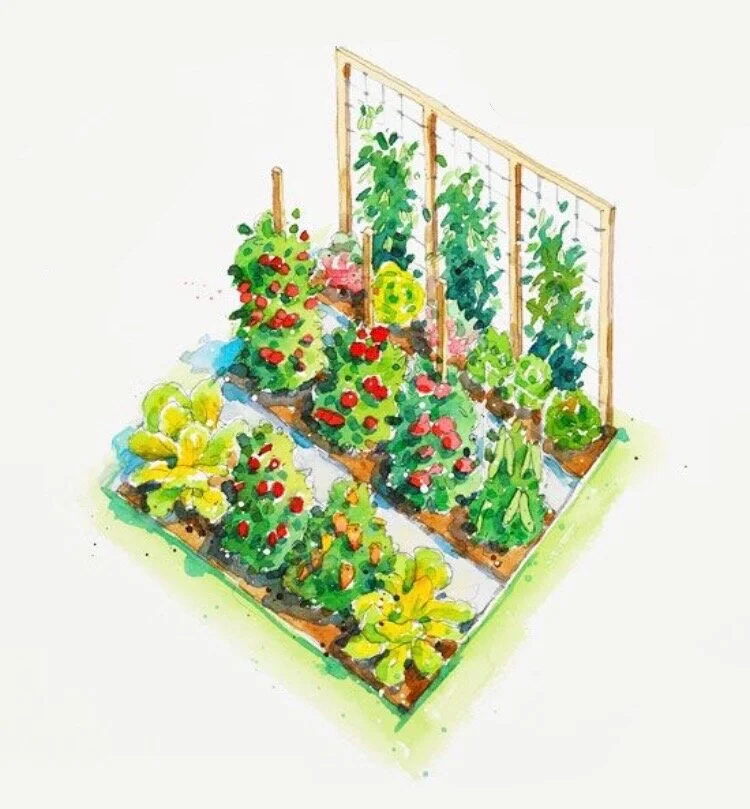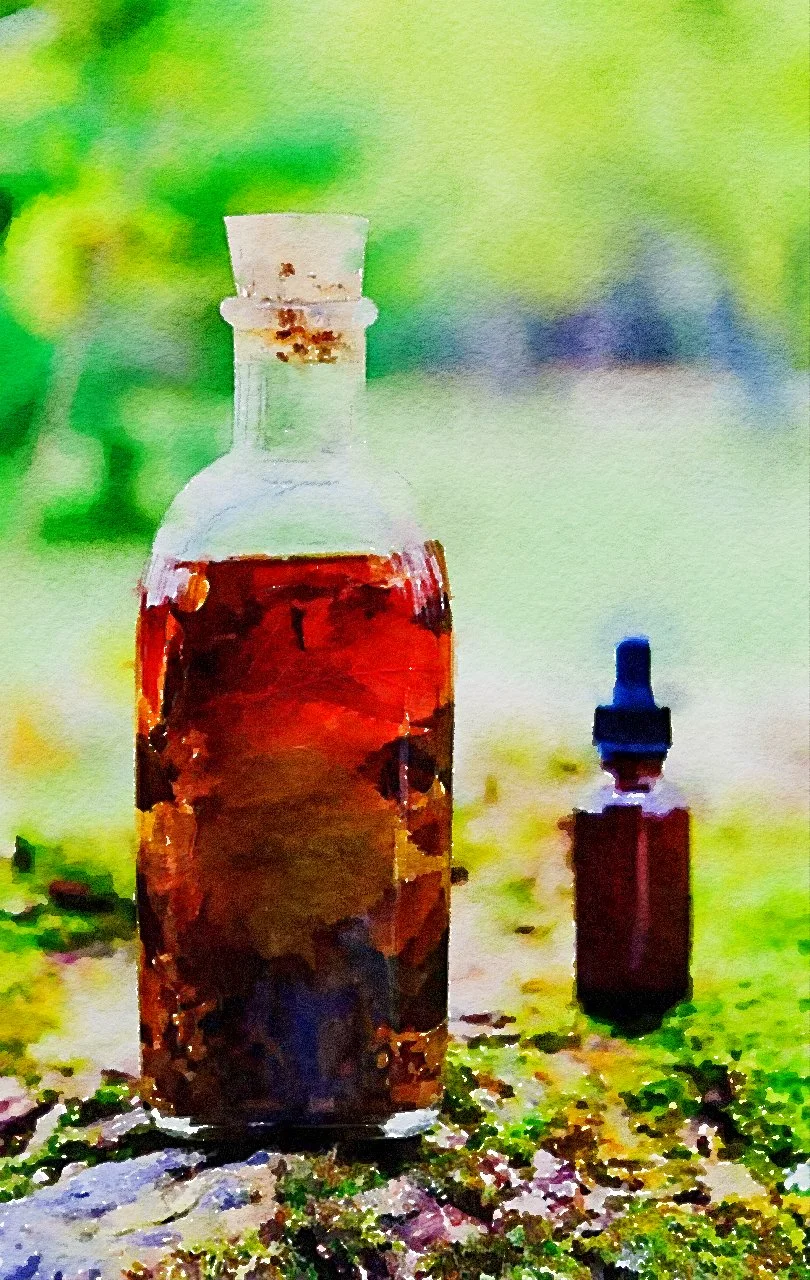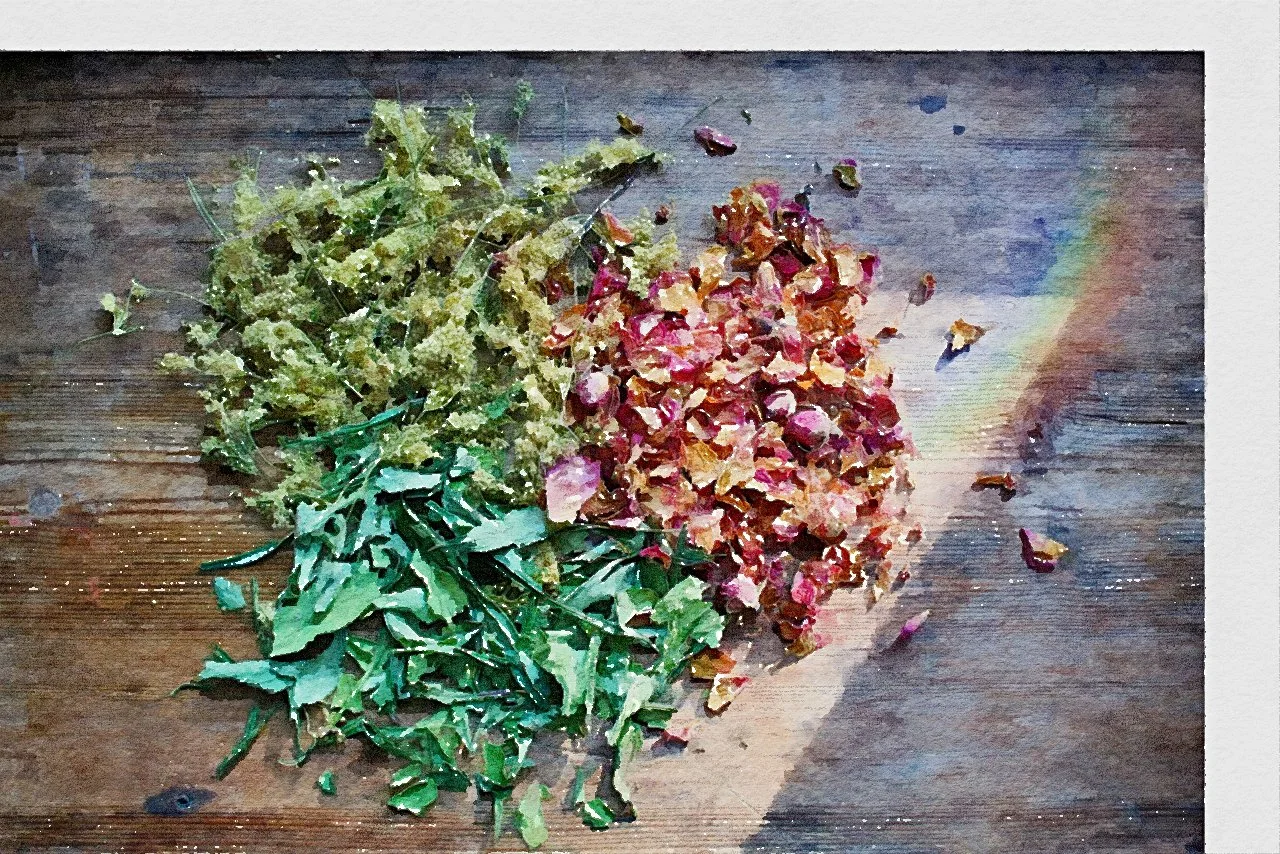Starting a Summer Vegetable Garden
Our summer plans include starting a summer vegetable garden form scratch in the fertile soil of a small town in the Pacific Northwest called Walla Walla. After digging through all kinds of resources, below are the tips I want to remember the most!
Anyone can grow a garden, it just is a matter of how much time you want to apply to it. Can be as simple as pressing a clove of garlic into the ground. Or finding a native plant that grows locally with little help.
Consider time of year. Most heavy blooms happen through the spring, but there is no bad time to start. Even in winter, you can start with some indoor seedlings or herbs. Through the hot summer months, there are a lot of plants than can be re-seeded or planted new so you get a continuation of food rather than just one season, or just to get started from scratch.
Start small! While you may have all these plans, Nature works on her own timescale. Everything seems painfully slow at first, it can eventually creep up on us. Start with something small, a single bed or species and see how you last through a full year cycle before designing everything.
A single 4x4 bed is a great way to get started. (maybe 2), for at least 1 full year of gardening to know what you like during the seasons. Pots are a great way to start, even without any big spaces of land. Indoor herbs work great too!
Pick a species to dive in on the short term: I eventually want flowers and herbs and medicinal plants, butterfly and bee friendly plants, perennials and food, but my intentions this year was to start with some veggies. Consider a long term balance of crop rotations, natives, edibles, ornamental and ecological plants in the back of your mind.
Start with easy plants:
natives that require no additional watering, etc bc this is their way of life, their home, their jam!
Or pick ones that have lots of easy info about growing well in your area.
Who’s to say you’ll know what you want year 3? maybe less flowers, more trees. if already designed garden and laid it out, there might be a problem you couldnt have guessed and you won’t be able to pivot and shift with your own likes of gardening. Learn what you enjoy doing, THEN increase size of garden. see how sun moves on your lot, trees blocking, things that just do or don’t work in your space for whatever reason
Veggies require full sun, and our favorites tend to be annuals (need to be replanted every year)
Think about other crops to use in rotation after this season’s harvest (not planting same family in same spot right after another)
Consider local conditions: sun, climate, and seasons
Do some research. I found lots of books on the pacific northwest, and all kinds of blogs:
Food Grown Right, In Your Backyard: Best starter book
Vegetable Gardening in the PNW: Month-by-month guides
On Natives (more for me to read for longer term gardening)
Real Gardens Grow Natives: Just to get into the mindset
Gardening with Natives: Maybe further down the line, detail on an amazing number of local native plants and how to grow them (or just notice them in the wild)
Think about if you want to start planting from organic seed (find seed banks online), or find a nursery where you can grab some transplants
Why go through the effort?
Before grow your first nutritious tomato, know you are getting health benefits of just being outside. Being out in the sun gives you V-D (actually a hormone), and other V&M you can only get outside. Touching the soil lets your body absorb all kinds of other biology and critters that your body LOVES! People enjoy being barefoot on the grass for a reason. Whether it is electric, biological, microbial, or all of the above and more, we just KNOW being in nature feels good and calming for some reason. Maybe it is telling our body that we are safe and have all we need (soil and water for food, all is well).
There are several compounds in the soil (of the few we know about) that has been studied to show that contact with skin helps elevate your mood. As a kid, we were told to go outside and play, get dirty. They knew something we didn’t.
Let’s face it, we don’t need another generation that doesn’t know how to boil water. Bring your kids, your grandparents into it. All kinds of benefits!
Stress relief. Studies show all other things considered, those who garden 3x a week are much less stressed.
Food mileage: 90% of the garlic we eat is imported from china, 2k miles from the west coast, or 7k miles on east. The average product in grocery store in 2019 crossed 2200 miles per product. Local food tells your body about its local conditions.
We know we can do it: in the 1940’s during WWII, 40% of the food came from victory gardens, or home/community gardens to support the war effort
Nutrient density, V&M and nutrients within the veggie or fruit. Those in the store are usually much lower in vitamins and minerals than advertised. Growing your own food allows you to pay attention to inputs which increase nutrient density
more vitamins:ABCDEFGHIJKLM….
Choose your location
Garden veggies like full sun, and the sun rises from east to west, on a southern tilt. If possible, choose a southern facing plot of land, or in this order of preference: (south, east, west, north). East is preferred to west because the morning sun is less harsh than in the afternoon, while also a better time to water (doesn’t get evaporated as quickly and can get down to the roots).
And most importantly, choose a spot that is easy for you to get to. Along a morning walk to get the mail/paper/etc. You want to be able to notice right away if your zucchini has become the size of your hand, then the next second is the size of a baseball bat (with no flavor). You can water easily and notice if anything is wrong.
Found from the UK site: Gardenorganic.uk
Soil Gardeners
First and foremost, we need to think about being soil farmers. The soil is a living organism in itself, each teaspoon of it holding BILLIONS of bacteria. Dirt is very different from soil. SOIL IS ALIVE. It is what holds everything together, feeds all our plants (and us, eventually), from the ground up. We want long-term success, which means feeding our plants something that is healthy all on its own, and will get stronger with each generation. Short term fixes of GMO seeds, pesticides (that kill ALL life, including our internal gut bugs in our stomachs), and monocropping, which strips our soil of the very life we are trying to cultivate.
strong soil helps create strong healthy plants. (less likely impacted by pests and disease)
strengthen the root zone, and the plant will take care of the rest
soil also holds moisture
soil thrives in an area by learning to retain enough without being water logged (understands the natural conditions so it can thrive without human intervention. others plants, that we brought in ourselves need a little more work)
Allow your plants to create their own natural defense which become our medicine. Those oils the plants produce to fight off bugs and things in the environment , literal oils the plants make that are amazing for us).
if you have limited resources, spend less on the structure of garden, more on the soil
Preparing your growing area
You can start small in pots or a fully raised bed, you will just have to bring in new soil every year.
Eventually, I’d love to have a fully functioning garden that can reach down into the root system. In that case, your first battle might be with weeds. These are basically any other plants that compete with your chosen plants for light, nutrition and water. Clear as much as you can before you start growing.
Try to do whatever you can do avoid having to resort to a blast of weed killer (glyphosate formulations), which is just using toxic chemicals right on the area for your precious food plant bed.
If you are in an area w soils with heavy metals from heavy industry or old orchard practices, consider doing a soil test
Instead, divide the plot in half. Dig one half, in the other you will feed the soil by using a thick organic mulch that covers the soil to exclude light.
For the mulched half, cut down the larger weeds just above soil level ( placing into your new compost heap, so long as there are no seeds). Then cover the area with a mulch that will exclude light.
a layer of compost or well rotted manure is ideal, 1 wheelbarrow full per 5 sqm
topped by cardboard (weighed down by bricks or another thin layer of compost so it doesn’t blow away), or a black plastic membrane, also pinned down.
Leave this for at least 6 - 12 months. It’s that simple. You don’t have to do a thing, as the weeds will weaken in the dark and the earthworms do their work to enrich the soil.
Now dig the area where you want to start growing. Take out tough and woody weeds like docks, thistles, nettles and brambles, removing all the roots. Put the foliage on the compost heap, drown the roots in a bucket of water for a couple of months - then add to the compost heap.
Then add compost or manure - one big wheelbarrow, or 5 large buckets, for every 5 square metres of ground. Dig this compost into the top 10 cms of soil, and your bed is ready for planting. Use a rake to break down and gently flatten the topsoil into a fine texture (known as tilth) so the seeds can access soil and water to germinate.
Mulch: Cover all bare soil with mulches to prevent moisture loss. For instance, grass clippings piled thickly onto layers of newspaper (6 – 8 sheets). Before applying mulches, hoe off any weeds and water dry soil well.
Picking your Crops
Fall crops such as cabbage, kale, broccoli, and lettuce can be direct seeded in the garden and transplanted if needed
Most fall vegetables can be easily transplanted, aside from root crops (carrots, beets, and radishes). These should stay in place until harvested.
Transplant fall crops into areas where spring or summer crops have been completely harvested and the plants have been removed by cutting them off at the soil surface, causing least disturbance to the soil. The roots will decompose deep in the soil, leaving channels that drain water to drain and gives worms space to move around more freely.
All American Selections - non profit, they rank regional plants for best seeds to grow in your area
The best way to enjoy a steady supply of vegetables is to succession plant. This means picking quick-growing vegetables by sowing a second or third crop a few weeks after the initial planting, to spread out your veggies over a longer time period
can do this with salad greens, bush beans, peas, and even cucumbers
In a large vegetable garden, practice interplanting. Combining 2+ plants in the same space. For example, when planting slower growing vegetables (tomatoes, cabbage, or broccoli), I sow seeds for fast-growing crops (like leaf lettuce, arugula, radishes, or turnips) in between. By the time the slower growing vegetables are ready for the space, the speedy crops have been harvested.
Crop Rotation
Consider planting with a plan to rotate between families each new transplant. A lot of the favorite garden plants in the fall all belong in the brassica family, but each family brings and takes different things from the soil, and you want to protect that soil diversity first and foremost.
Common vegetable families include:
Solanaceae: potatoes, tomatoes, eggplant, peppers, tomatillos
Cucurbits: cucumber, squash, melon
Brassica: broccoli, Brussels sprouts, cauliflower, cabbage, kale, kohlrabi, mustard, radish, turnips
Allium: onions, garlic, leeks, scallions
Legumes: peas, beans, okra
Grains are a great way to improve soil, becuase their deep roots (48”) act as scavengers to bring nutrients up to surface, allowing you to use less fertilzier
grow your own wheat straw, breaks down in summer (mow in early june and breaks down in 30 days). increases microbial activity, plants growing stronger and better resists pests and diseasess.
Don’t forget about grasses! Many come back every year and can be really beautful.
Rice plants are great in heavy rain areas as a rotation crop, and have sturdy grasses that hold up in rain storms.
Some fun pairings recommended from Briegrows.com, even some online classes
basil (amazel) with Echinacea (kimset are a great pollinating variety of flowers. The popular pom-pom varieties don’t pollinate)
buckwheat (white or pink flowers) with crimson and clover, or agaste (both pollinator attractors)
kale (prism) and Allum Millenium (bred to be tolerant of warm summers, and can last through the seasons)
barley and baptisia decadense, yellow flowers!
rice (warm season grass, holds up to rain) with ascleias tuberosa (hellow yellow flower)
sorghum (in most modern bird seed) with heliopsis, Tuscan Sun (yellow), both heat tolerant, similar growing conditions. can also pair the sorghum with sunflowers (both can get super tall 14’+)
sesame (warm season flowering plant: dark seeded is pink, light seeded is white) with salvia (color spires, violet riot (blooms all summer better than just spring!)
Plants that deter animals from your garden
There is no such thing as ANIMAL PROOF. There are only some plants that some animals don’t like as much.
Deter animals by lining your bed edges with plants that deter animals
spicy greens (animals don’t seem to like the bitters), and they make great edible ground cover
arugula & mustard (are the spiciest ones!)
plus chard, lettuce, kale, and spinach
Put all seeds together in bag, shake and distribute on compost directly in garden. Harvest all season long).
basil
garlic: Voles hate the smell, and you can see their little tunnels make a U-turn right at the plants.
Plant along bed edges in the fall as impenetrable barrier. Planting it is easier than cooking it! Just thumb into grown 1/2” deep, you don’t even need to take paper off
remove the flowers so the energy goes into the bulb and not flowering seed. make garlic scape pesto, freeze and use in chili’s and soups
have an anti-vampire cermemony, hang garlic bulbs 2 weeks+ dry with good air flow, cures it for longer storage to use 6-9 months
nightshades: tomatoes, eggplants, peppers and potatoes, all have poisonous foliage, so great to plant along edges
onions
peppers
potatoes: many immigrants to America were not happy with the starches they found in the store, so they easily made their own in their new backyards. Also, a great plant to line bed edges bc ground hogs don’t like them! Can start growing them on your countertop. cut eyes into quarter size pieces, and in 5-6 days they dry out and can be planted. if plant fresh, they will rot. harvest when they flower.
Watering
Water slowly, so it can be absorbed into the roots and not just evaporate
Water at the base of plant, off the leaves if possible (which can hold onto bacteria/mold)
Water as early in day as possible (avoid when sun at highest)
Fertilizer
organic fertilizer only, any synthetic version suppresses microbial activity (esp those that are salt based)
Through summer: fish emulsion application once a month
Recommend raking it in so can break it down faster. Some say only to fertilize at the very end of harvest, others at the start. You should minimize it regardless, so the plant can build its own defenses and dig for and choose its own nutrients
slow release organic natural granular (breaks down in soil to improve soil food web, feed all diff parts of food web growing in soil)
2 kinds
slow relesae organic natural granular (breaks down in soil to improve soil food web, feed all diff parts of food web growing in soil)
quickly deliver solution to a specific problem. instantly active.
When purchasing fertilizer, understand nothing is better than natural. Nothing is better than the whole thing, these are just the ones we know how to measure!
3 numbers typically on a bag: 3 macronutrients (NPK, usually <10, bat guano can be over 10, anything larger is probably man-synthesized). Chemically created fertilizers will be higher than 10, like 20/20/20, a dead giveaway that not natural/organic. Avoid these, as they tend to be salt based and kill the soil life we are trying to create.
Each of the 3 popular focused fertilizer numbers is related to a certain phase of growth (whether it is growing leaves, branches, buds, flowers, how tall, the color, etc)
nitrogen: related to growth (when first starting to grow, want this number larger)
phosphous: flowering (whether for veggies or just buds)
potaasium: flavor, strength of cell walls, root delopment, nutrient mobility (plants flowering/fruiting phase as well)
Composting
As you add material to the compost heap, mix greens (nitrogen rich) with browns (carbon rich) at a 50/50 ratio. Dry heaps will need watering. Turning the heap will aerate it and speed up decomposition.
Away to close your circle. Doesn’t have to be so big, can be simple.
it is the remainder after break down of green and brown materials and kitchen scraps, left with nutrient rich soil material
green: nitrogen rich
(kitchen scraps, loose tea & bags, clippings, trimmings, manure)
brown: carbon rich
(brown leaves, straw, wood, cardboard, pine needles, dead plants/flowers)
mixed with light and moisture, bacteria and fungus (good kind) start the decomposition process breaking these down.
Some more resources on Composting
Book: The Overstory, to understand why a decaying log is so important to the forest floor
How much to grow!
(If you want to survive off your garden)
And how to space them out…
Herb Growing:
Some Crop Rotation Examples:
























